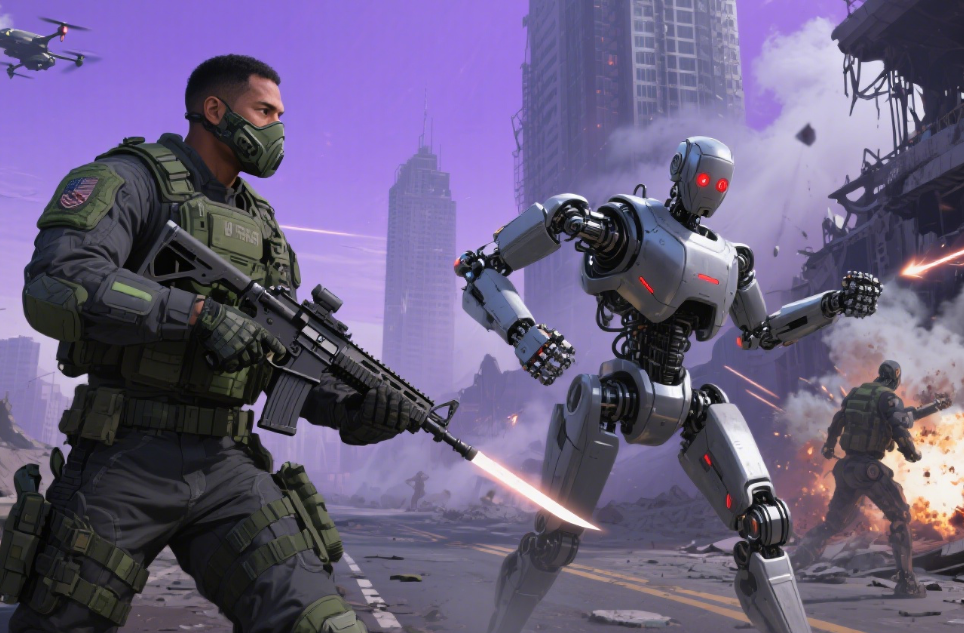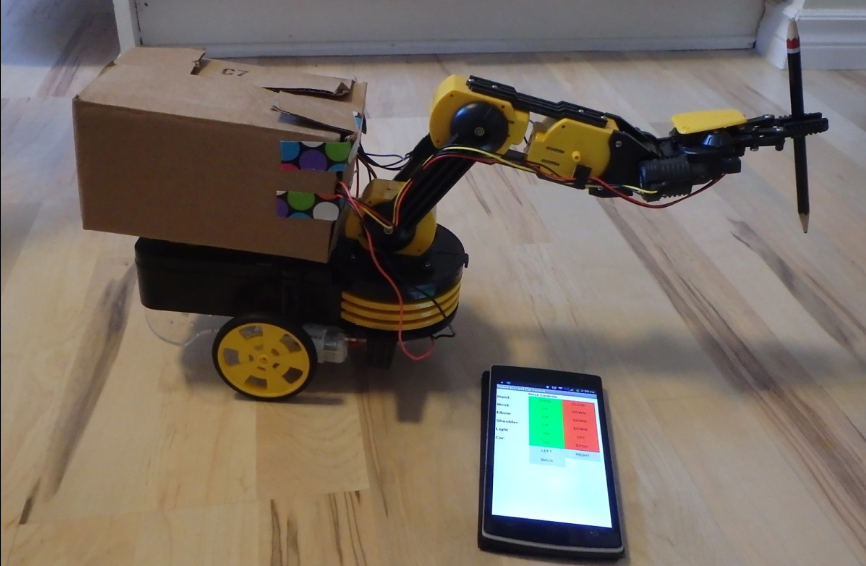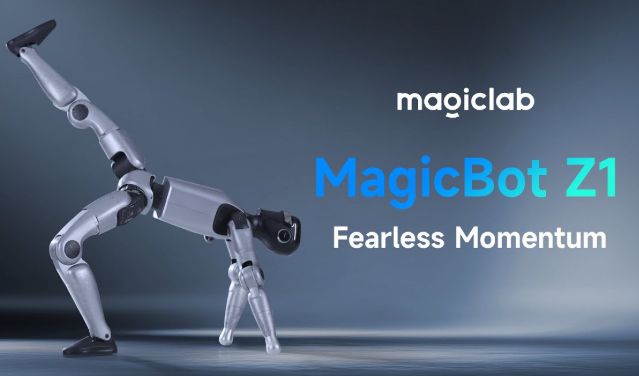
The image is iconic: a U.S. Marine, the epitome of human toughness, resolve, and battlefield skill. Now, imagine pitting that warrior not against another human force, but against a relentless, unfeeling, hyper-capable artificial intelligence encased in robotic armor. Who wins in a head-to-head clash of flesh-and-blood grit versus silicon-and-steel efficiency? This question – Marines vs AI Robot – isn't just science fiction fodder; it's the cutting edge of military doctrine, ethics, and technological development. This article delves beyond the hype, dissecting the tangible realities, strategic implications, and undeniable friction point where elite human warriors meet the relentless advance of autonomous machines. Forget simplistic match-ups; we're exploring the profound transformation of warfare itself.
The Unmatched Marine: Peak Human Combat Potential
The U.S. Marine Corps isn't just a fighting force; it's a culture forged in resilience, adaptability, and an unparalleled fighting spirit. Their strength lies in qualities difficult, if not currently impossible, to fully replicate with AI.
The Power of Human Intuition and Judgment
Marines excel in the "fog of war" – chaotic, ambiguous situations where rules break down and preset algorithms falter. Their human intuition, ability to read subtle cues (body language, tone, context), and capacity for nuanced moral reasoning in split-second decisions remain unmatched. An AI can analyze data faster, but a Marine can understand *why* a villager looks nervous or recognize a subtle shift in an adversary's tactics that doesn't fit any pre-programmed pattern.
Adaptability in Chaos
When plans collapse, Marines improvise. They repurpose gear, create novel tactics on the fly, and overcome unforeseen obstacles through ingenuity and shared experience. An AI robot operates within the confines of its programming and sensor suite. Faced with a completely novel obstacle or a clever adversary exploiting a previously unknown software vulnerability, its effectiveness could plummet.
Resilience and the Will to Fight
The human capacity to endure suffering, push through injury, and maintain fighting spirit against overwhelming odds is legendary, especially among elite units. While a robot can fight until destroyed, it doesn't experience fear, fatigue, or pain in the human sense, but its actions are predetermined by cold logic, not inspiring grit or self-sacrifice born of loyalty to comrades ("Semper Fidelis"). This intangible human factor remains decisive in grueling, protracted conflicts.
The AI Robot Combatant: Speed, Precision, and Unflinching Resolve

AI-driven robots represent a paradigm shift, offering capabilities that fundamentally alter the battlefield equation, presenting both opportunities and stark challenges to human combatants.
Superhuman Physical Performance
Robotic platforms aren't constrained by human physiology. They can be designed for extreme strength, endurance beyond any Marine, tolerance to environmental extremes (bitter cold, scorching heat, vacuum, deep ocean pressure – relevant for future conflicts potentially anywhere, including alien oceans explored by Marine Robot Interstellar tech), and operate continuously without rest. Their reaction times can be measured in milliseconds, far faster than the fastest human neural pathways.
Unmatched Data Processing and Situational Awareness
An AI robot can integrate feeds from multiple sensors (visual, thermal, audio, LIDAR, radar) simultaneously, processing terabytes of data in real-time. It can track hundreds of targets, calculate ballistic solutions instantly, and identify threats or opportunities invisible to the human eye. This provides a level of battlefield awareness no single Marine, or even a squad, could hope to achieve unaided.
Reduced Risk and Emotional Detachment
Deploying AI robots removes human soldiers from the immediate danger zone. They can enter contaminated environments, breach fortified positions, or conduct high-risk reconnaissance without risking lives. Their operational decisions are purely logical, unaffected by fear, anger, revenge, or stress-induced errors – but also devoid of compassion.
The Scalability and Endurance Factor
While training a single Marine takes years and immense resources, AI software can be replicated infinitely. Robotic bodies, though complex, can potentially be mass-produced. This offers a potential for overwhelming force projection at a scale difficult for human-centric militaries to match in prolonged engagements.
Beyond the Smackdown: Future Warfare is Hybrid (Marines vs AI Robot Becomes Marines *With* AI Robots)
The most realistic and strategically potent future isn't Marines *versus* AI robots, but Marines *enhanced* and *collaborating* with AI robotic systems. The concept isn't replacement, but augmentation.
The "Centaur Team" Concept
Military strategists increasingly discuss the "Centaur" model: human-AI teams where each does what they do best. Imagine a Marine squad leader equipped with an AI tactical assistant projecting real-time threat vectors onto his augmented reality visor, while semi-autonomous robotic mules carry heavy gear and robotic "wingmen" scout ahead or provide suppressing fire. The Marine provides the judgment, intent, and adaptability; the AI provides superhuman data crunching, precision, and physical endurance. DARPA's Squad X Experimentation program exemplifies this approach.
Closing the Awareness Gap: Robotic Sensors Extending Human Reach
Unmanned Ground Vehicles (UGVs) and drones will act as forward scouts, sentries, and sensor platforms, feeding critical data back to human commanders and squads. Think of them as highly advanced eyes and ears, penetrating danger zones and relaying intelligence far faster and more comprehensively than human scouts could. Even roles focused on support, like marine robot cleaners maintaining operational environments, free human personnel for combat tasks.
Reverse Adaptation: Marines Training for the Robotic Age
The presence of battlefield robots necessitates new Marine training: operating alongside robots, directing robotic assets, understanding their capabilities and limitations, maintaining them in the field, and crucially, learning to counter enemy robotic systems effectively. Marines are already training with UGVs and UAVs, a trend that will intensify.
The Rub: Critical Friction Points and Ethical Abysses
The integration of AI robots into combat isn't seamless. Significant challenges and profound ethical dilemmas loom large.
Lethal Autonomous Weapons Systems (LAWS): The "Killer Robot" Dilemma
The development of systems capable of selecting and engaging targets without meaningful human intervention sparks intense global debate. Can an AI truly understand proportionality? Can it reliably distinguish between combatants and civilians in complex environments? Who is accountable if a fully autonomous robot makes a catastrophic mistake? The potential for unintended escalation or malfunction is a nightmare scenario many experts and governments aim to prevent through regulation or outright bans.
Cyber Vulnerability: Hacking the Steel Soldier
An AI robot is only as robust as its software and communication links. They are highly vulnerable to sophisticated cyberattacks: hacking to shut them down, take control ("spoofing"), feed them false sensor data, or turn them against friendly forces. Safeguarding these systems against evolving cyber threats is a colossal challenge.
AI Limitations: Brittleness and Unpredictable Failures
AI systems, especially those based on machine learning, can be "brittle." They perform exceptionally well within the parameters they were trained on but can fail catastrophically when faced with novel situations outside their training data ("edge cases"). Their decision-making processes can also be opaque ("black box problem"), making it hard to predict or explain their behavior, a critical issue for trust and accountability on the battlefield.
The Moral Injury: Humans Overseeing AI Killing
Even if humans remain in the decision loop ("human-on-the-loop"), the psychological impact of using AI to kill at scale is unknown. Does pushing a button to authorize a swarm of AI drones erode the psychological barriers to violence differently than traditional combat? The potential for moral injury and psychological distance requires serious study.
The Verdict: Symbiosis, Not Supersession (For Now)
So, who "wins" in Marines vs AI Robot? Currently, and for the foreseeable future, the question is flawed. Neither operates best in pure isolation against the other.
Pure Human Advantage: Dominates in complex judgment, ethical reasoning under pressure, true adaptability, and handling the unknown unknowns. Essential for leadership, strategy, and morally fraught decisions.
Pure AI/Robot Advantage: Dominates in raw data processing, speed of reaction, physical endurance/stability, precision execution, and operating in environments lethal to humans.
The optimal path is leveraging AI and robotics as transformative *tools* that extend Marine capabilities, reduce risks in specific scenarios, and provide unprecedented battlefield awareness. The future Marine will likely be a "tech-augmented warrior," intimately collaborating with AI assistants and robotic teammates. However, the essential qualities of human judgment, warrior ethos, and strategic brilliance embodied by the Marine Corps remain irreplaceable cornerstones. The evolution isn't replacement; it's enhancement for unprecedented effectiveness on hyper-modern battlefields.
FAQs: Marines vs AI Robot - Your Burning Questions Answered
Q1: Are AI robots currently replacing Marines in combat roles?
A1: No, not directly replacing Marines in core infantry combat roles like riflemen, squad leaders, or close-quarters battle specialists. AI robots are currently deployed primarily in support roles (EOD/bomb disposal, logistics, reconnaissance, surveillance) or as force multipliers working *alongside* Marines, such as robotic mules carrying gear or UGVs scouting ahead. Autonomous weapons making lethal decisions without human input are still subject to intense policy debate and are not standard deployment.
Q2: What is the biggest advantage Marines have over AI robots?
A2: The most significant advantage Marines possess is **adaptive judgment in complex, ambiguous situations**. Marines can understand context, apply intuition (based on experience and cultural understanding), make nuanced ethical decisions instantly, and innovate solutions to completely unforeseen problems ("unknown unknowns"). AI robots struggle massively outside their programmed parameters and lack genuine comprehension of human motivations and cultural subtleties.
Q3: Could AI robots ever become completely independent soldiers?
A3: While theoretically possible, achieving true strategic and ethical autonomy comparable to a human soldier remains an immense challenge. Replicating human-level situational awareness, common sense reasoning, genuine ethical decision-making (beyond rule-based constraints), and the ability to handle novel strategic dilemmas appears far off, if achievable at all with current AI paradigms. Concerns about reliability, accountability, and ethical implications also create significant political and societal barriers to fully autonomous robotic soldiers replacing humans.
Q4: How are Marines training differently because of AI robots?
A4: Training is evolving to include:
* Operating alongside robotic teammates, learning command protocols. * Interpreting data streams from multiple robotic sensors. * Performing maintenance and troubleshooting on fielded robotic systems. * Developing tactics for countering enemy robotic assets (jamming, spoofing, physical neutralization). * Understanding the capabilities, limitations, and vulnerabilities of AI systems. This "robotic readiness" is becoming a crucial part of modern Marine Corps training pipelines.
Conclusion: The Human Element Endures
The Marines vs AI Robot narrative captures a pivotal moment in military history. While AI-driven robotics will undeniably transform warfare, granting superhuman physical and computational abilities, the core attributes of the Marine – adaptability, courage, judgment, and fighting spirit honed by human experience – remain indispensable. The future belongs not to a victor in this imagined duel, but to the powerful, albeit complex, partnership between human ingenuity and machine capability. This synergy aims for one goal: overwhelming effectiveness while navigating the profound ethical terrain of modern conflict. The Marine will remain the decision-maker, the leader, the warrior; AI will increasingly become their most potent tool, creating a battlefield where flesh and steel fight, and hopefully win, as one.






